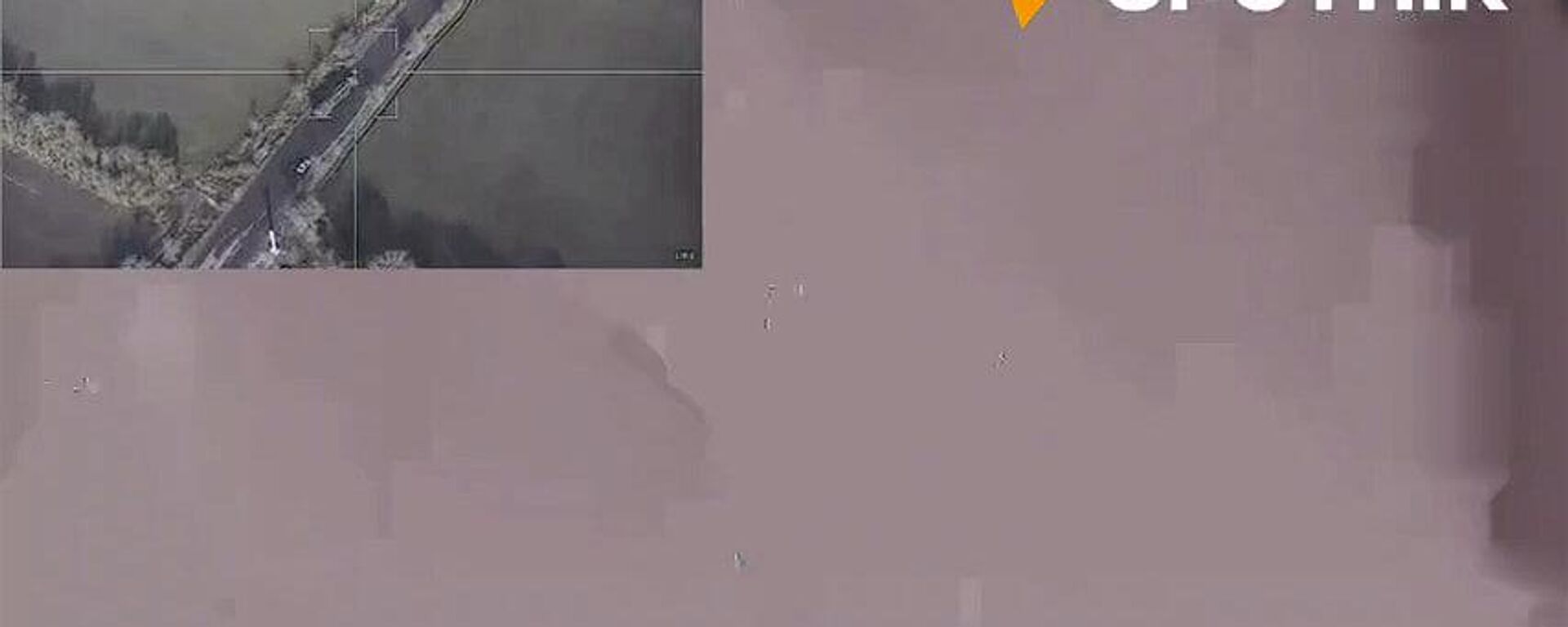https://sputnikglobe.com/20231216/russian-airborne-troops-to-receive-new-self-propelled-artillery-1115616504.html
Lotus Blooming: Russian Airborne Troops to Receive New Self-Propelled Artillery
Lotus Blooming: Russian Airborne Troops to Receive New Self-Propelled Artillery
Sputnik International
The development of the new self-propelled artillery system "Lotus" has reached the finish line, with state tests ahead.
2023-12-16T05:24+0000
2023-12-16T05:24+0000
2023-12-16T05:25+0000
military
russia
self-propelled cannon
paratroopers
russia’s airborne forces (vdv)
https://cdn1.img.sputnikglobe.com/img/07e7/08/0b/1112533290_0:66:2624:1542_1920x0_80_0_0_beefa216f5c4383d2694e4c25677338b.jpg
The development of Russia's new Lotus self-propelled artillery system for the airborne troops has reached the finish line, and state tests are pending, after which it will be put into service.The combat mass of the Lotus is 18 tons, although it retains the ability to land by parachute. The BMD-4M chassis is used as a basis for combination with other Airborne Forces vehicles. Due to the need to install new large units, the hull has been lengthened, while the layout and protection level remained unchanged.The crew of the self-propelled artillery consists of four soldiers. Each has his own hatch and observation equipment. The commander and gunner's seats are equipped with modern optical-electronic sights. There is horizontal sighting in any direction, and the elevation angle ranges from -4 to 80 degrees. The gun is a further development of the 120 mm 2A51 with a longer barrel, combining the main qualities and capabilities of a cannon, howitzer, and mortar.The conversion time from marching to combat position is 30 seconds, its range is 13 kilometers, and its rate of fire ranges from six to eight rounds per minute.In addition, a line of ammunition with great modernization potential is being developed specifically for this piece of artillery.In conditions of the active use of drones and anti-battery radars, the mobility of artillery equipment comes first. Its survival depends on how quickly the self-propelled artillery system can leave its position. The Lotus is fast. The 2B-06-2 diesel engine with a power of 450 hp accelerates the self-propelled vehicle up to 70 km/h on roads, and up to 40 in rough terrain. The range is 500 km, which is very good for a vehicle of that weight.
https://sputnikglobe.com/20231207/watch-russian-paratroopers-destroy-ukrainian-radar-and-mobile-communications-stations-1115443655.html
russia
Sputnik International
feedback@sputniknews.com
+74956456601
MIA „Rossiya Segodnya“
2023
Sputnik International
feedback@sputniknews.com
+74956456601
MIA „Rossiya Segodnya“
News
en_EN
Sputnik International
feedback@sputniknews.com
+74956456601
MIA „Rossiya Segodnya“
Sputnik International
feedback@sputniknews.com
+74956456601
MIA „Rossiya Segodnya“
russian airborne troops, self-propelled artillery system
russian airborne troops, self-propelled artillery system
Lotus Blooming: Russian Airborne Troops to Receive New Self-Propelled Artillery
05:24 GMT 16.12.2023 (Updated: 05:25 GMT 16.12.2023) Self-propelled artillery refers to artillery pieces mounted on armored vehicles, allowing them to move quickly and independently to various locations on the battlefield. This mobility provides greater flexibility and firepower, as these weapons can be deployed closer to the front lines and avoid the need for separate transportation vehicles.
The development of Russia's new Lotus
self-propelled artillery system for the airborne troops has reached the finish line, and state tests are pending, after which it will be put into service.
The combat mass of the Lotus is 18 tons, although it retains the ability to land by parachute. The BMD-4M chassis is used as a basis for combination with other Airborne Forces vehicles. Due to the need to install new large units, the hull has been lengthened, while the layout and protection level remained unchanged.
The crew of the self-propelled artillery consists of
four soldiers. Each has his own hatch and observation equipment. The commander and gunner's seats are equipped with modern optical-electronic sights. There is horizontal sighting in any direction, and the elevation angle ranges from -4 to 80 degrees. The gun is a further development of the 120 mm 2A51 with a longer barrel, combining the main qualities and capabilities of a cannon, howitzer, and mortar.
The conversion time from marching to combat position is 30 seconds, its range is 13 kilometers, and its rate of fire ranges from six to eight rounds per minute.
In addition, a line of ammunition with great modernization potential is being developed specifically for this piece of artillery.

7 December 2023, 05:45 GMT
In conditions of the active use of drones and anti-battery radars, the mobility of artillery equipment comes first. Its survival depends on how quickly the self-propelled artillery system can leave its position. The Lotus is fast. The 2B-06-2 diesel engine with a power of 450 hp accelerates the self-propelled vehicle up to 70 km/h on roads, and up to 40 in rough terrain. The range is 500 km, which is very good for a vehicle of that weight.



